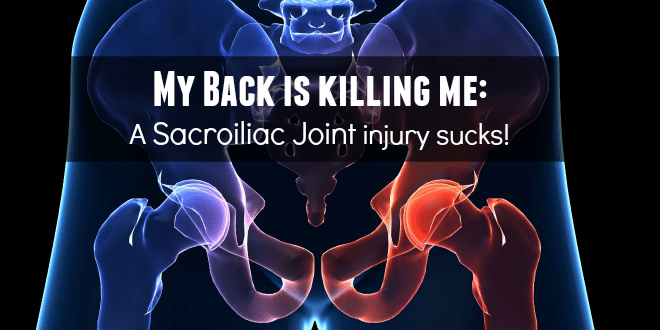Lower back pain - What your PT fails to demonstrate when they tell you to roll on a tennis ball. Get this right & the benefits can be long lasting.

| Author: | John-Wayne Hughes |
| Published: | 16th March 2017 |
| Categories: | Blog, Clinical massage, Physiotherapy, Stretches, Clinical advice |
In short:

Lower back pain caused by sacroiliac joint dysfunction can strike anyone and does not discriminate.
Sacroiliac joint pain is experienced by upto 25% of all individuals that go to their doctors for help with pain in the lower back. . . . . . . . . . .Why should you be concerned?
See below for full article and the video!
In detail:
Designed to relieve stress and forces on the legs and back, the SIJ has a number of muscles, ligaments and specialised fascia attaching to the joint that help it function as a buffer between the hip and lumbar spine. Any dysfunction in the joint can result in pain felt in the attaching soft tissues. For anyone that loves running or jogging, unfortunately they will need to discontinue such activities in the short term and the reason for this is that the condition is easily exacerbated by doing something as simple as standing or walking. In fact even sitting for prolonged periods at work, at home or when driving can result in excruciating pain. Often found on one side of the low back the pain ranges from a deep throb to a sharp intense pain. which can radiate across the hip, into the buttocks and groin. In some cases it may also spread to the leg, which cn result in the condition being misdiagnosed as sciatica.
Here's the bad news!
Unfortunately, the condition can take several months to overcome and incorrect activity or exercise can result in the symptoms getting worse. So if you are experiencing any SIJ type symptoms it is important that you seek help!
Here's the good news!
You can improve the speed of recovery by -
-
Working with appropriately qualified professionals to restore normal function and correct any muscular imbalances.
-
Eating more anti-inflammatory foods, such as broccoli, beetroot or bueberries, to reduce the likelihood of aggravating any inflammed soft tissues.
-
Seeking advice on how to perform exercises that can help stabalise the pelvis and core.
-
Stretching chronically tight muscles and strengthening those weakened by the condition.
-
Having specialist treatment of the soft tissues of hip and leg muscles is necessary for further balancing the muscles around the pelvic region and ensuring normal motion across all joints.
Since becoming a soft tissue therapist I have been a massive advocate of helping my clients help themselves. One such way, is by teaching them how to perform self massage with a foam roller or a massage or tennis ball. In the video below, I demonstrate how to perform self massage of the soft tissues often associated with SIJ pain. Not only will this video show you how to help alleviate SIJ pain, it will ultimately introduce you to a more effecctive way of performing self massage. This is something physical trainers love to recommend you do but often fail to demonstrate it for you well.
Self massage to help alleviate pain in the lower back, glutes and leg that is asscociated with SIJ trauma, dysfunction or injury.
In this video I demonstrate a number of ways to perform self massage in way that may be assist in the rehabilitation of sacroiliac joint and lowe back pain. Please not that this is not a definitive guide and any exercises shown here should only be performed under the guidance of the relevant professional. Please don't hesitate to get in touch for more information.
If you are suffering from any of the symptoms or complaints described above and would like assistance with your ailments, please book online.
DISCLAIMER: John Hughes is a qualified Clinical Soft tissue & Remedial Massage Specialist, and the exercises demonstrated in this video are to be used only as a reminder of how to carry out exercises that have been demonstrated to you by an appropriately qualified professional. Performing the techniques shown in this video should never take the place of visiting your own doctor or other appropriately qualified person for treating any discomfort or pain you may be experiencing. Remember, your own therapist will ensure that you are performing the exercises correctly. Doing it wrong may result in you making the situation worse instead of better. If at any time, you are aware of any increase in discomfort or experience any unexpected pain while performing any remedial exercises then you must STOP and seek advice from your General Practitioner.
Back to all blogsSubscribe for updates
AdvanceSRM is always looking to share KNOWLEDGE-BOMBS with clients & here you too can sign-up to have access to the latest social media, blogs, news, videos and research that is generated or recommended by us.